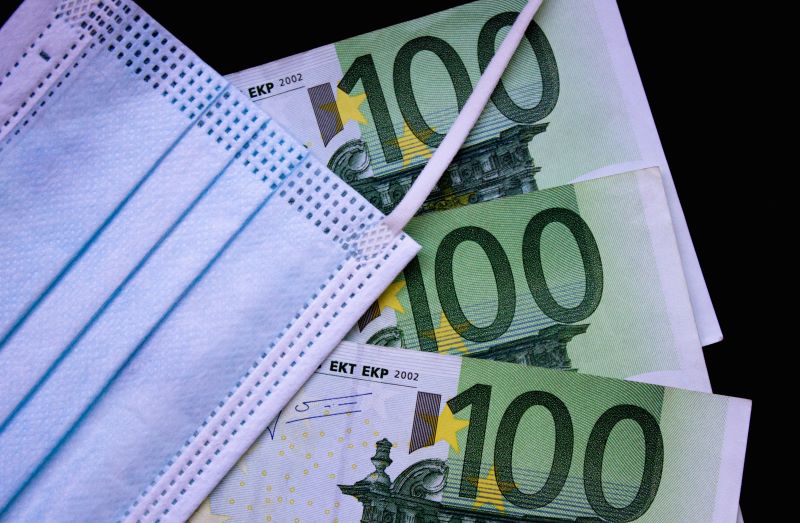Recommended
The COVID-19 pandemic led to a deep global recession as the virus rapidly spread and governments restricted movements. The economic shock was compounded by widespread uncertainty among businesses and concerns about the risks of increasing financial sector distress limiting access to credit.The immediate impact of the crisis on firms was devastating, with firms on average reporting that a quarter of their sales revenue was wiped out, but it was also mixed; small firms were impacted more than large firms, for example.
We’ve seen in the past that despite their immediate pain, crises can also bring about “creative destruction.” That is, crises can play a cleansing role, by speeding up the reallocation of economic activity from less productive to more productive firms, leading to greater economic growth in the longer run. It is not clear whether a pattern of creative destruction will emerge from the COVID-19 crisis. The broad-based shock may simply result in widespread destruction. Or, instead of shifting economic activity to the most productive firms, the crisis may reallocate activity to firms with greater market power or political connections, which could be detrimental to productivity growth.
In a new paper, we examine the impact of the COVID-19 crisis on the reallocation of economic activity across firms, and whether this reallocation depends on the competition environment. To do this, we use the World Bank’s Enterprise Surveys COVID-19 Follow-up Surveys for about 8,000 firms in 23 emerging and developing countries in Europe and Central Asia, for the period 2020-2021. Matching this data with 2019 Enterprise Surveys data allows us to link performance during the COVID-19 pandemic back to pre-COVID firm characteristics. When the pandemic hit, many governments promptly implemented broad policy support schemes to address the economic fallout and provided immediate relief to protect firms and workers from the worst effects. The follow-up surveys also include questions on government support received during the pandemic, making it possible to explore where this support was directed.
Our researched yielded four main findings:
1. The crisis did indeed have a heterogenous impact on firms
Smaller firms were hit harder than larger firms. Firms with female top managers also were hit harder by the crisis than firms with male top managers. Firms that were more innovative in the pre-crisis period continued to innovate during the crisis, since they were more likely to increase their online activity and remote work. State-owned firms were less able to adjust to the crisis through such innovation. Finally, firms that primarily sell to the national market did better than firms that sell to the local market, and those with access to international markets were better able to increase remote work and anticipated lower arrears.
2. Controlling for all relevant firm characteristics, economic activity was reallocated toward more productive firms during the COVID-19 crisis
In other words, we do find evidence of creative destruction. Firms with high pre-crisis labor productivity fared better, experiencing smaller drops in sales and employment than firms with low pre-crisis labor productivity. More productive firms were also more likely to adapt to the crisis by increasing remote work. Finally, the extent of this “creative destruction” during the COVID-19 crisis was stronger compared with pre-crisis reallocation.
3. Countries with a strong competition environment experienced more reallocation from less productive to more productive firms than countries with a weak competition environment
The extent of creative destruction was greater in countries where firms were subject to greater competition. In our analysis we use alternative measures of the country’s competition environment and find these results to be robust and the magnitudes to be economically meaningful.
For example, in countries with high competition, firms at the 10th percentile of the pre-crisis labor productivity distribution experienced an 18-percentage point larger drop in sales than firms at the 90th percentile; this difference is only 10 percentage points in countries with low competition. Similarly, in countries with high competition, firms in the 10th percentile of the labor productivity distribution were 15 percentage points more likely to decrease employment and 16 percentage points more likely to anticipate falling into arrears than firms in the 90th percentile. The corresponding differences in countries with low competition were 5 and 8 percentage points, respectively. In countries with high competition, the lowest productivity firms were 19 percentage points less likely to have increased remote work than the highest productivity firms; this difference was only 5 percentage points in countries with low competition.
4. Government support went to less productive and larger firms
When we examine the determinants of receiving government support, we see that support went to less productive and larger firms, regardless of their pre-crisis innovation. This is true even after controlling for the drop in sales or employment experienced by the firm. Thus, government support measures during the COVID-19 crisis may have had adverse effects on competition and productivity growth.
As economies try to recover from the economic crisis unleashed by COVID, it will be important for policymakers to phase out support measures as soon as appropriate and focus on fostering a competitive business environment, while continuing to protect vulnerable households. Such an environment is key to a strong recovery, resilience to future crises, and sustainable, long-term economic growth.
Disclaimer
CGD blog posts reflect the views of the authors, drawing on prior research and experience in their areas of expertise. CGD is a nonpartisan, independent organization and does not take institutional positions.
Image credit for social media/web: Adobe Stock






